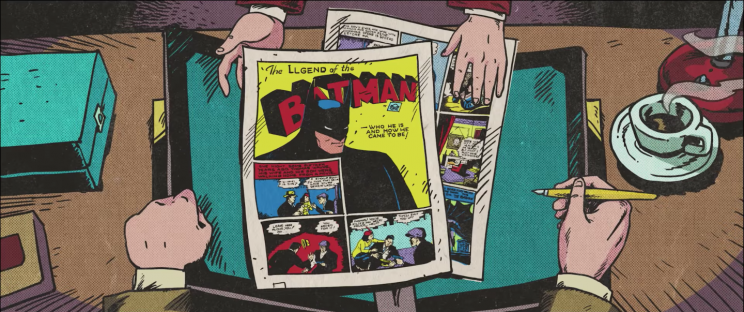‘Batman & Bill’: Who Really Created Batman?

Batman & Bill wastes little time asserting its answer to the question posed in my headline. Although generations of comic book fans grew up with the image of a little square box reading “Bob Kane” implanted in their minds — it was on the splash-page of every Batman comic for many years — the truth, as proven decisively in the new documentary Batman & Bill, is that writer Bill Finger, not artist Bob Kane, invented the Dark Knight. In fact, Finger came up with the nickname “Dark Knight” for Batman, as well as creating Robin, the Bat Cave, the Batmobile, and virtually every other essential element of the Batman mythos.
But for decades, artist Kane, who executed Finger’s vision, was able to claim sole creation of Batman, becoming a very rich man, while Finger died in 1974, neglected and poor. Batman & Bill — which begins streaming Saturday on Hulu — tells the story of Finger and the quest to give him his due. It also, unfortunately, spends a lot of time lionizing the man who led the quest, Marc Tyler Nobleman. I’ll explain what I mean by “unfortunately” in a minute.
For most of its length, Batman & Bill is an absorbing chronicle of comic-book history, because the life of Batman, begun in the 1930s, encapsulates the history of the comic-book industry itself. Filmmakers Don Argott and Sheena M. Joyce do a fine job of taking viewers through stories of how Finger and Kane, both in their 20s, collaborated on the first comics; how Batman comics achieved their initial wave of popularity; how Kane power-grabbed legal credit and never let go; and how Nobleman, in the 21st century, came to write a book (2012’s Bill the Boy Wonder: The Secret Co-Creator of Batman) and, after that, led a fight to get Finger a co-creator credit on all Batman material. (That credit first appeared in the movies on last year’s Batman v Superman: Dawn of Justice.)
Although he was doing noble work, Nobleman doesn’t make the best hero for this film — he’s a little too slick and self-dramatizing to be likable, prone to look at the camera glassy-eyed and say vainglorious things such as “I felt a calling to do this.” The filmmakers do him no favors by including comments such as “Marc is a very brave person. … He is righteous. He wants to do right in the world,” all uttered by … Nobleman’s wife! Talk about a conflicted witness.
Whenever Nobleman is not taking center stage — we see how he’s turned Finger-pointing into a mini-industry, giving a Batman TED Talk and lecturing all over the country — Batman & Bill is interesting in every way. Finger’s life as a struggling writer (he wrote a lot of pulp fiction), the reverberations of his career failure on his family (Finger’s granddaughter is a fascinatingly complex woman), and the film’s adroit, lively way of guiding us through the potentially dull subject of copyright law all combine to give Batman & Bill a lot of juicy oomph. It’s a measure of how well directors Argott and Joyce have constructed this movie that, by the end, you almost feel sorry for Kane, who died famous and wealthy in 1998 but not without dents to a reputation that has really gone sour by now.
Batman & Bill begins streaming Saturday on Hulu.
Read more from Yahoo TV:
‘Bloodline’ Season 3 Trailer: The Rayburns Do More Bad Things
‘Grey’s Anatomy’ Explores Delicate Balance Between Religious Rights and Children’s Welfare
‘Scandal’ Tweet-cap: Nasty Women


